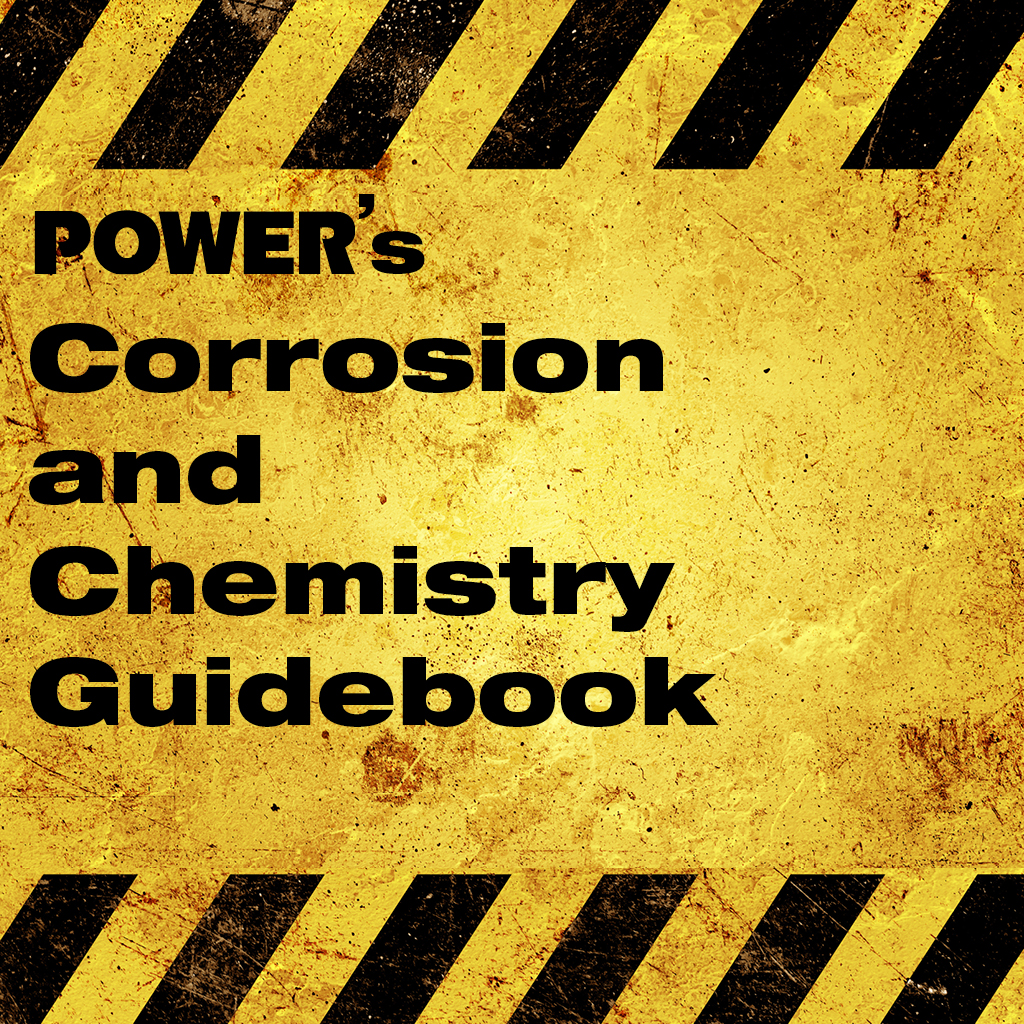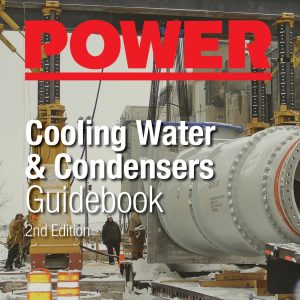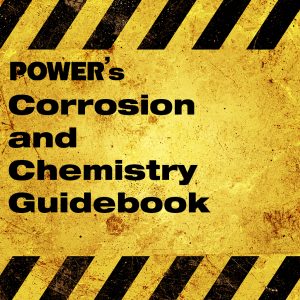Description
This guidebook exclusively features corrosion and chemistry articles, including full charts, photographs, graphs and step-by-step instructions previously featured in POWER magazine.
Delivered in a PDF format, 116 pages.
Articles Include:
- Load Cycling and Boiler Metals: How to Save Your Power Plant
As many coal-fired power plants designed for baseload service are asked to cycle, unforeseen stresses have been introduced to boiler pressure parts. Understanding the effects and implementing mitigation strategies could prevent premature component failure and keep facilities operating reliably.
- The Role of Fireside Corrosion on Boiler Tube Failures, Part I
- The Role of Fireside Corrosion on Boiler Tube Failures, Part 2
- Corrosion Protection for FGD Vessels
- Defeating Concrete Reinforcing Steel Corrosion
Four concrete cooling towers at a coal-fired electrical generation plant exhibited reinforcing steel corrosion that was causing concrete deterioration. This case study follows the repairs to those towers— how the corrosion control solution was selected, how repairs were made, and how follow-up tests found the repairs to be effective three years later.
- Winning the Cooling Tower Trifecta: Controlling Corrosion, Scale, and Microbiological Fouling
In cooling water chemistry for power plants, it is not enough to control one or two of the major chemistry issues. Successful treatment requires simultaneous control of corrosion, scale, and microbiological fouling. These three are so strongly tied to each other that if one is allowed to go out of control, the other two soon will be.
- Protect Your Stack Linings from Corrosion
- Prevent Contamination and Corrosion in Demineralized Water Storage Tanks Using
- Nitrogen Sparging and Blanketing
- A Primer on Gas Turbine Failure Modes
When a gas turbine goes down, recovery can be an expensive, time-consuming process. Knowing what can go wrong and how to anticipate turbine failures can help you avoid a difficult unplanned outage.
- Covered Piping Systems O&M Programs for CCGT Plants
- Cation conductivity monitoring: A reality check
- Preventing Dust Accumulation on Beams
- Robotic Underwater Debris Remover
- Nut, Bolt, and Flange Face Corrosion Protection
- How to Measure Corrosion Processes Faster and More Accurately
Maintaining reliable and efficient plant operations requires good control of corrosion and corrosion product transport in power plant water systems. The Electric Power Research Institute recommends oxidation-reduction potential for passivator control in feedwater systems, as do many industry experts. Here’s how to turn that recommendation into a robust feedwater monitoring program.
- More Strategies for Inspecting HRSGs in Two- Shift and Low-Load Service
- Microbial Control in Cooling Water Improves Plant Performance
Microbial inhibition, as part of a robust cooling water treatment program, presents a special challenge because of the variability in makeup water sources, plant processes, and discharge permits. Failure to maintain a proper microbial inhibition program will affect your bottom line as a result of heat rate degradation.
- Selecting a Combined Cycle Water Chemistry Program
The lifeblood of the combined cycle plant is its water chemistry program. This is particularly true for plants designed for high pressures and temperatures as well as fast starts and cycling. Even though such plants are increasingly common, no universal chemistry program can be used for all of them.
- Battling White Rust
- Cycle Chemistry Commissioning Deserves Its Own Strategy
- ORP as a Predictor of WFGD Chemistry and Wastewater Treatment
Recent studies have shown that system oxidation-reduction potential (ORP) is not only an important factor for predicting wet flue gas desulfurization (WFGD) absorber chemistry but also may be a predictor of process equipment corrosion and wastewater treatment requirements.





